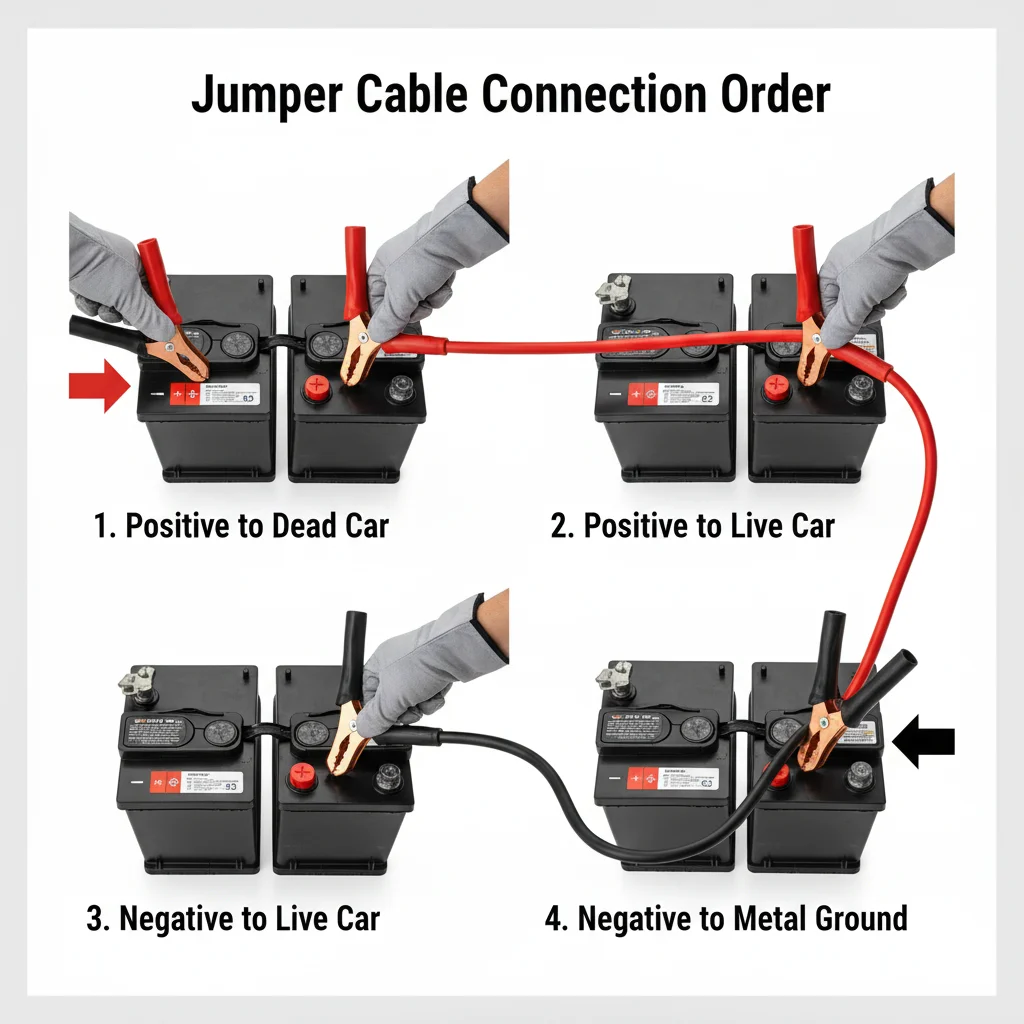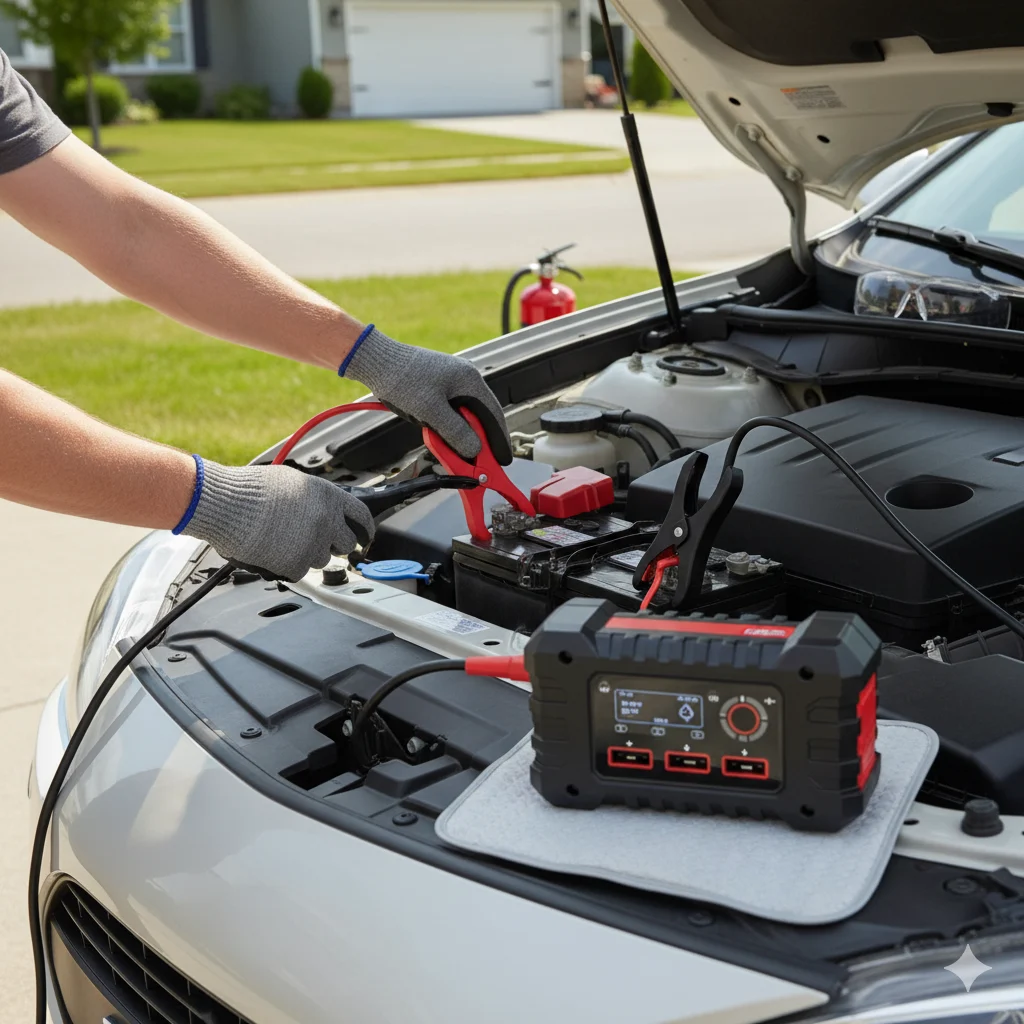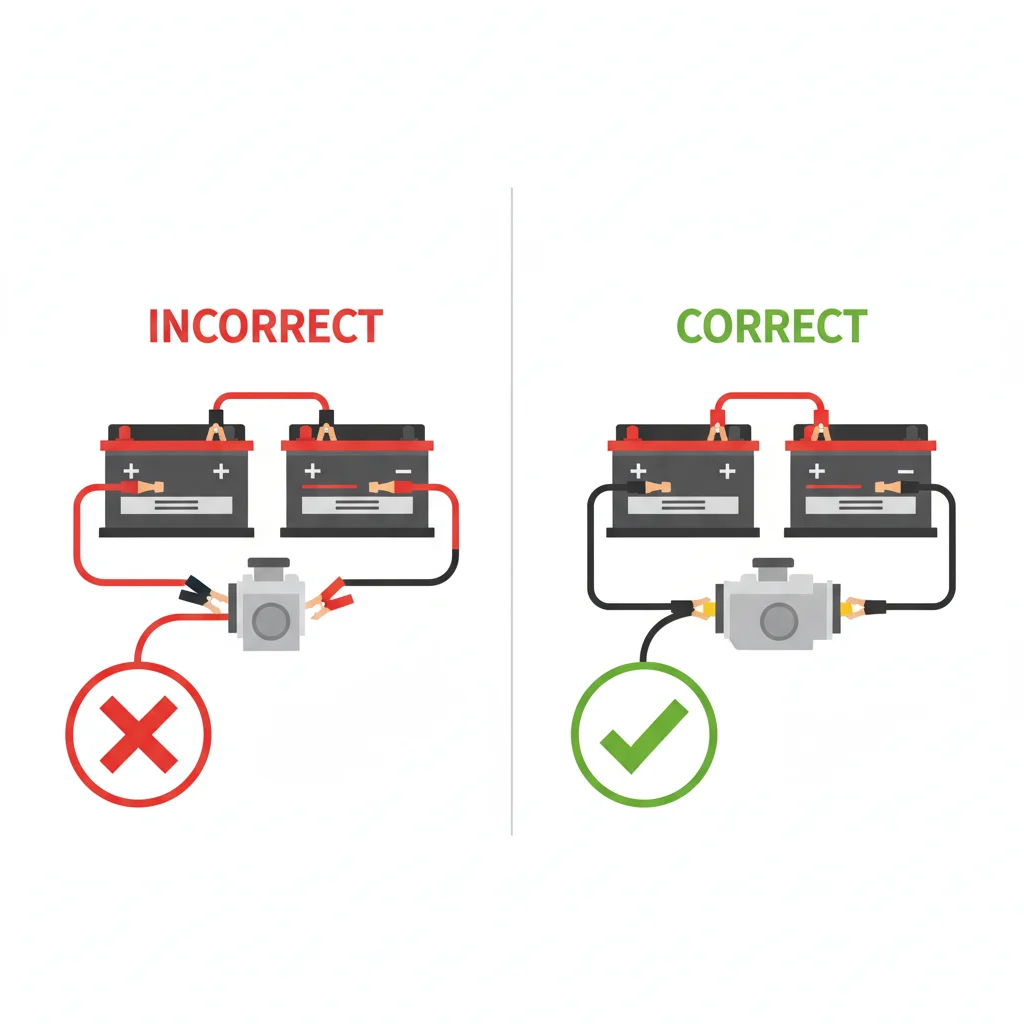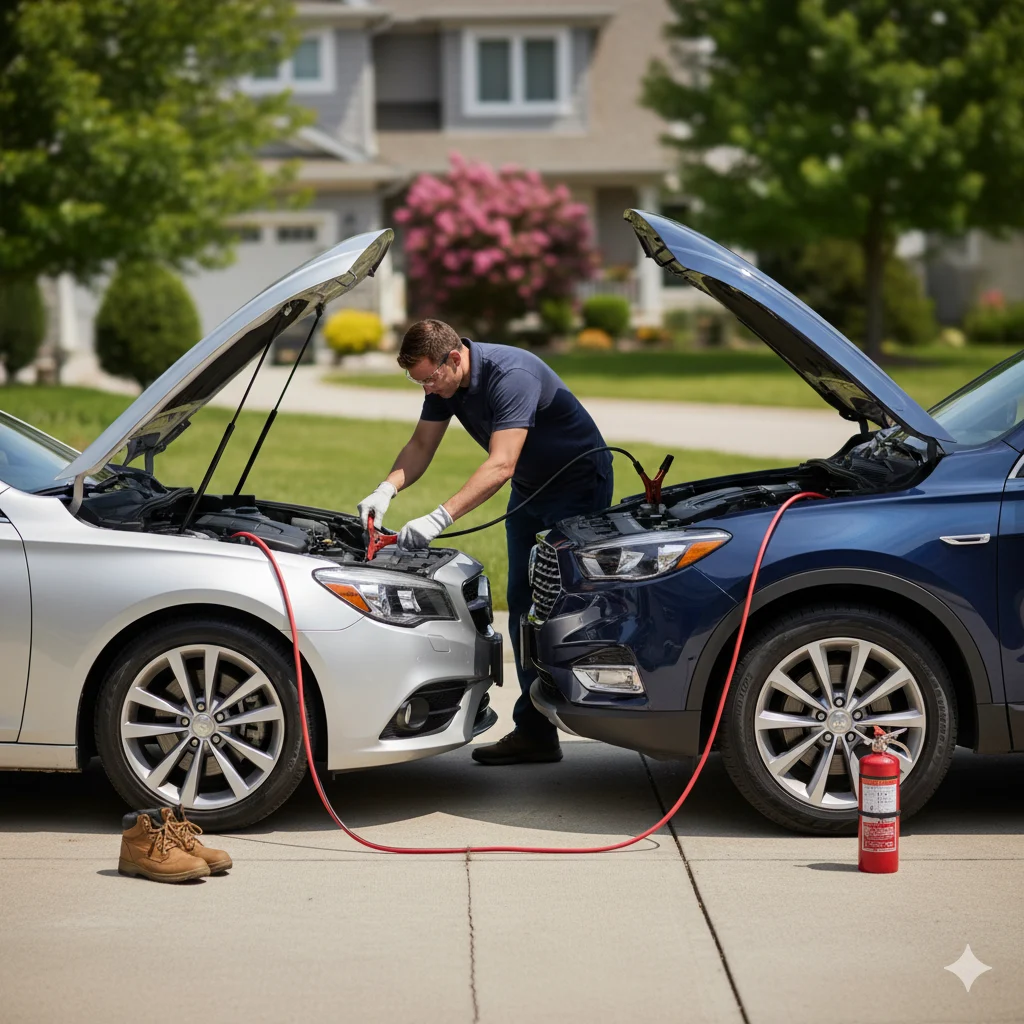One rainy morning, Mia sat in her car, ready to drive to work — but the engine wouldn’t start. The dashboard lights flickered weakly, and she sighed in frustration. The culprit? A dead battery. It happens to almost everyone at some point, and knowing how to jump a car can save time, money, and stress.
Whether you’re stuck in a parking lot or helping a friend in need, jump-starting a car is easier than it seems — if you do it safely. This detailed guide walks you through each step, from preparing the tools to restarting your vehicle with confidence.
Why Your Car Battery Might Die
Before jumping a car, it’s helpful to understand why the battery died. Common causes include:
- Leaving headlights or interior lights on overnight.
- Extreme cold or heat that drains battery power.
- A faulty alternator not charging properly.
- Corroded terminals or loose battery connections.
- An old battery nearing the end of its lifespan.
If this happens once in a while, a jump-start might be all you need. But if it’s frequent, your battery or charging system could need professional attention.
Tools You Need Before Jump-Starting a Car
You don’t need fancy equipment — just these essentials:
- Jumper cables: A sturdy set of insulated red (positive) and black (negative) cables.
- Another vehicle: A running car with a good battery.
- Gloves and safety glasses (optional but recommended).
- Owner’s manual: To confirm your car’s battery locations and safety instructions.
Pro Tip: Keep a portable jump starter pack in your trunk for emergencies. It can start your car without needing another vehicle.
Safety First: Important Precautions Before Jumping a Car
Jump-starting a car involves electricity, so take a few precautions:
- Check for damage. Don’t jump-start if the battery is cracked, leaking, or frozen.
- Turn off both cars. Make sure ignition and accessories are off.
- Keep metal objects away. Avoid touching tools or jewelry to battery terminals.
- Don’t lean directly over the battery. Hydrogen gas can escape during charging.
- Park cars safely. Keep vehicles close but not touching.
How to Jump a Car Step-by-Step
Follow these steps carefully to jump your car safely and effectively.

1. Position Both Vehicles
Park the working car close to the dead one — usually front to front — and turn off both engines. Engage parking brakes on both vehicles.
2. Open the Hoods
Locate each car’s battery. On some newer vehicles, the battery might be under a plastic cover or near the trunk; check the manual if unsure.
3. Identify Terminals
Find the positive (+) and negative (-) terminals. Clean away any corrosion using a cloth or brush for a solid connection.
4. Connect the Jumper Cables in the Correct Order
- Attach red clamp to the positive (+) terminal of the dead battery.
- Connect the other red clamp to the positive (+) terminal of the good battery.
- Attach black clamp to the negative (-) terminal of the good battery.
- Connect the final black clamp to an unpainted metal surface (like a bolt or engine block) on the dead car — not the battery itself.
This last connection grounds the circuit and prevents sparks near the battery.
5. Start the Working Vehicle
Turn on the working car’s engine and let it run for 2–3 minutes. This allows the dead battery to receive some charge.
6. Start the Dead Vehicle
Now, try starting the dead car. If it starts, let both vehicles idle for 5–10 minutes to recharge the battery.
If it doesn’t start, wait another few minutes, or check the connections.
7. Disconnect the Cables Carefully (in Reverse Order)
- Remove the black clamp from the grounded metal on the dead car.
- Remove the black clamp from the good battery.
- Remove the red clamp from the good battery.
- Finally, remove the red clamp from the previously dead battery.
Avoid letting the clamps touch each other during removal.
8. Let the Recharged Car Run
Keep the newly started car running for at least 15–20 minutes. This helps the alternator recharge the battery enough for your next start.
Using a Portable Jump Starter (No Second Car Needed)
If no one’s around to help, a portable jump starter can be a lifesaver.

- Turn off your car and all electronics.
- Connect the red clamp to the positive terminal.
- Attach the black clamp to an unpainted metal part of the engine.
- Power on the jump starter and try to start your car.
- Once the car starts, turn off the jump starter and remove the clamps.
Compact and rechargeable, these devices are great for emergencies, road trips, or winter months.
Common Mistakes to Avoid When Jump-Starting a Car
Even simple tasks can go wrong if you rush. Avoid these common errors:

- ❌ Connecting cables to the wrong terminals. This can cause sparks or damage your battery.
- ❌ Jump-starting with damaged cables. Replace frayed or exposed wires immediately.
- ❌ Skipping the ground connection. Always ground the negative clamp for safety.
- ❌ Turning off the donor car too soon. Wait until the dead car is running steadily.
- ❌ Ignoring persistent battery issues. Frequent jumps mean you likely need a new battery.
How to Tell If the Jump Worked
Signs your jump-start was successful:
- The car starts easily and idles smoothly.
- Dashboard lights stop flickering.
- The engine runs without unusual sounds.
If your car dies again soon after, the battery might not hold a charge, or there could be an alternator problem. Visit a mechanic to test both components.
What to Do After Jump-Starting Your Car
- Keep driving for at least 20 minutes to recharge the battery.
- Avoid short trips immediately afterward — longer drives are better.
- Turn off unnecessary electronics like the radio or AC to reduce strain.
- Test the battery within a few days using a voltmeter or at an auto shop.
Alternative Methods to Start a Car
If you don’t have jumper cables or another vehicle, try these:
- Push Start (for Manual Cars):
- Turn on ignition to “ON.”
- Press clutch and shift to 2nd gear.
- Have someone push the car.
- Release clutch when moving — the engine should start.
- Call Roadside Assistance:
Professionals can safely test your battery and jump it without risk.
When to Replace Your Battery Instead
If your battery is older than 3–5 years, struggles to hold a charge, or shows corrosion, replacement may be the only long-term fix. Modern vehicles depend heavily on battery voltage for electrical systems, so staying proactive saves bigger headaches later.
FAQs About Jumping a Car
1. Can I jump a car by myself?
Yes, if you have a portable jump starter. But for safety, avoid doing it alone at night or in unsafe areas.
2. How long does it take to jump-start a car?
Usually 5–10 minutes once cables are connected correctly.
3. Can jump-starting damage my car?
Not if done properly. Always connect the cables in the correct order and check for damage first.
4. What if my car still won’t start after jumping?
It could be a bad alternator, corroded terminals, or a drained battery that can’t hold a charge.
5. Can I jump a hybrid or electric car?
Hybrids can sometimes be jumped, but electric vehicles (EVs) have different systems. Check your owner’s manual first.
Conclusion
Knowing how to jump a car isn’t just a handy skill — it’s a lifesaver. From understanding battery safety to following each step carefully, you now have the knowledge to bring a dead vehicle back to life.
So next time your engine refuses to start, stay calm, follow these directions, and remember: a dead battery doesn’t mean the end of the road — just a small detour.




